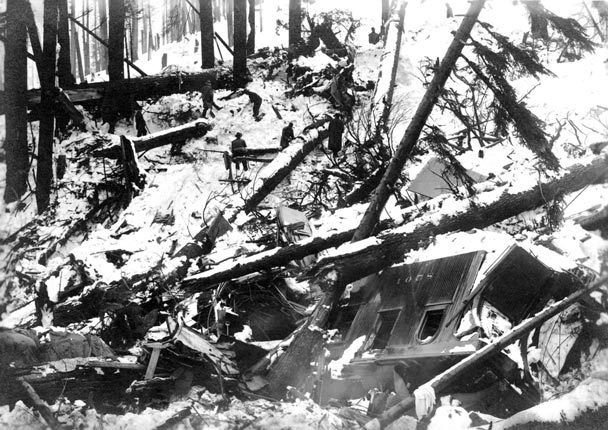Local News
1910 Stevens Pass avalanche still deadliest in U.S. history
Originally published February 27, 2010 at 10:00 pm Updated March 1, 2010 at 10:35 am

1 of 4 | A destroyed train car and other debris from the 1910 avalanche are shown in this photo provided by the Everett Public Library. The railroad town of Wellington, just west of Stevens Pass, was the scene of the worst avalanche disaster in U.S. history, when two passenger trains were swept away and nearly 100 people were killed.
The Wellington Avalanche of March 1, 1910, near Stevens Pass is still the deadliest in U.S. history, with 96 lives lost.
By Lynda V. Mapes
Seattle Times environment reporter
The snow swirled day after day, driven by breathtaking wind, and piling in drifts some 20 feet high.
Then it started to rain. Lightning stabbed the darkness, illuminating two trains stuck in snow drifts on the tracks at Wellington, near Stevens Pass. Thunder boomed — and a wall of snow 14 feet high let loose and slammed into the trains, sweeping them 150 feet down into the Tye River gorge.
In all, 96 souls were lost in the Wellington disaster on March 1, 1910. It was the most deadly avalanche in U.S. history. A century later, it still is.
The avalanche forever changed railroading through the high Cascades. Afterward, the Great Northern Railroad — today’s Burlington Northern Santa Fe — built massive concrete snowsheds over the tracks. Eventually, a 7.8-mile-long tunnel was built through the mountains at lower elevation, opening in 1929 and still in use.
{snip}
 = new reply since forum marked as read
= new reply since forum marked as read
